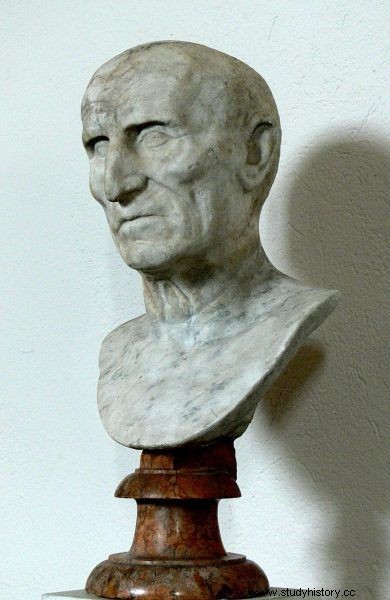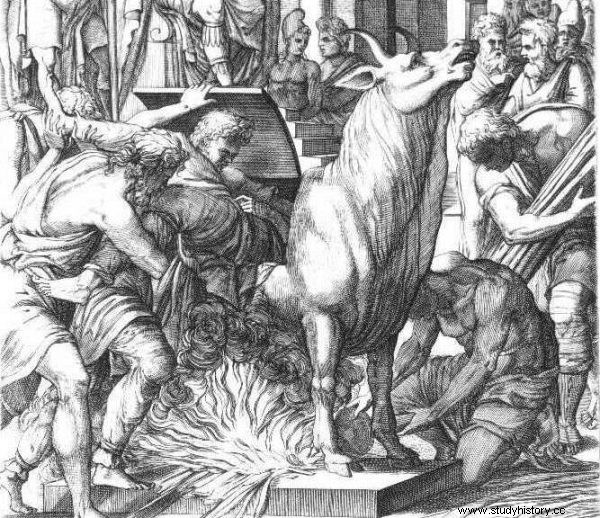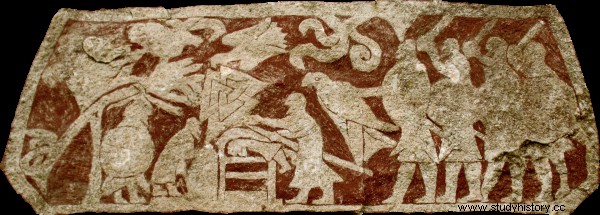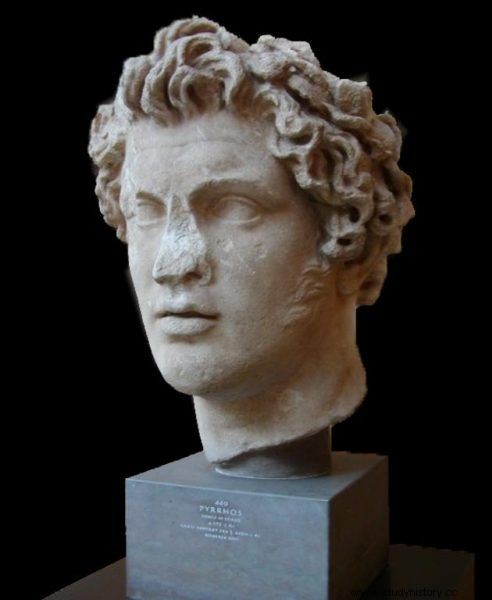The brutal side of human nature makes itself felt in a variety of ways. Sometimes, however, it seems that someone has definitely exaggerated, as can be seen in the examples of the deaths of several ancient rulers ...
Let's start the macabre counting down from ancient Rome.
Desecrated head
Emperor Galba ruled in a difficult time, called in Roman history "the year of the four emperors" . In ruling, he showed remarkable severity towards his subjects. He refused to pay praetorians money and raised taxes. What is worse, everyone knew perfectly well that the decisive influence on the emperor was Titus Vinius, Cornelius Laco and Icelandus Marcianus, which weakened the image of Galba and aroused aversion towards him among the Roman society. There was a rebellion involving two legions and the forces stationed at Germania Inferior.
In January 69, Emperor Galba set off to meet the rebels, realizing that his time of reign was over. On the way, however, the cavalry unit caught up with him. As Plutarch claims, the emperor was then supposed to say: "Hit it if it will be for the benefit of the Romans!" .

In total, about 120 people declared the killing of Galba!
He didn't have to repeat twice - he was beheaded on the spot. This is not the end though! The ruler's head was taken to the camp of his opponents, where it was mocked for a long time and used ... as a ball . Exaggeration? Not necessarily! In ancient Rome, a display of contempt for a severed head was actually standard for extremely disliked rulers. "Many examples of cutting off and displaying the heads of political opponents have been gathered by Voisin." - we read in the book "Spectacles of Death in Ancient Rome by Donald Kyle -
For example, after the assassination of Caesar, the crowd passed through the streets with the head of Helvius Cynna, mistaken for Cornelius Cynna, stuck on a spear [...] Octavian sent Brutus's head to Rome to be thrown at the foot of the Caesar statue [...] Nero in Rome mocked of the heads of two dead people, one killed in Asia and the other in Marseille […].
Cooked alive!
Let us now move away from Rome and go back a bit in time. In the 6th century BC the city of Akragas was ruled by the hated by his people Falaris. Aristotle later used the example of his reign to explain the conditions for tyranny. Some sources even mention Falaris' tendencies towards cannibalism! What is most characteristic, however, he used to lock his subordinates - although in this case the word "victims" seems better - in a bronze statue of a bull. Later, a fire was lit underneath and the unfortunates were boiled alive.
It is not hard to guess that Falaris did not live to see a peaceful death. About 554 B.C.E. there was an uprising led by Telemachus, in which the tyrant was captured and ... prepared to die in a bronze bull .

The bull of Falaris
Speaking of cooking, the leader of the peasant uprising in Hungary and Transylvania, György Dózsa comes to mind. In 1514, he received an order from Tamás Bakóczow to organize and train armed forces. It went quite well:about 100,000 kurucs were gathered, mainly peasants. Unfortunately, it soon turned out that the organizers of the crusade did not intend to equip this army in any way. To make matters worse, in the pre-harvest, the landowners ordered the farmers to return and cultivate. There was a rebellion.
Władysław II threatened the insurgents with death if they did not return home, which only aggravated the situation. The mob of peasants managed to capture Casnàd, and then Arad and Világos, acquiring more and more military equipment and people. Soon, however, the warnings of Władysław II came true:the rebels were surrounded by a regular army and defeated, and György Dózsa was taken prisoner. He was sentenced to a brutal and show death by ... roasting on a hot metal throne. An iron scepter, also previously reddened, was inserted into the leader's hand. Worst of all, six of his closest associates were offered an exoneration if they agreed to eat a fragment of their chief's roasted flesh ...
Blood Eagle
Among the most brutal methods of killing, one cannot fail to mention the legendary "blood eagle" with which Ivar the Boneless was supposed to kill Aella of Northumbria. Although today opinions on the use of this method by the Vikings are divided One thing is certain:if it was used on even one victim, it definitely deserves a place in this article. The thing was to chop the ribs out of the victim's back with an ax, pull them out, and then "decorate" them with the lungs. > The opponent "bound" in this way was to serve as a symbol of victory. According to a legend reported by Scald Sigvat, Ivar, taking revenge for his father's death, "cut an eagle on Aella's back." Later legends picked up on this drastic detail, and there were more descriptive details, as well as the claim that the Vikings did so on a regular basis. We will probably never know the truth about the "bloody eagle" ... Maybe that's a good thing?

A scene from the Gotland stone of Stora Hammars to depict the blood eagle ritual
Accidental, strange deaths
Staying on the subject of the Vikings for a moment longer, another legend tells of the bizarre death of Sigurd the Mighty. After winning the battle against the Scots under Máel Brigte, the Viking leader strapped his opponent's decapitated head to his saddle and rode away. It turned out, however, that Máel fought even after his death:one of his teeth injured Sigurd's leg. He got infected and Wiking died soon. There are many such unpleasant and improbable cases in history: James II (ruling Scotland in 1437-1460) blew himself up with one of his own cannons and died on the spot ; King Henry I ate too many lampreys, which seems far more likely than eating too many melons - which Pope Paul II managed to do. Nothing, however, beats the Greek king Pyrrus (exactly the one who gave the proverb "Pyrrhic victory"), who even managed to become the ruler of Macedonia. He died in a horseback duel in Argos against a certain soldier. This one didn't even hurt the king - his… mother did who, seeing her son in trouble, grabbed the tile and threw it towards the ruler, hitting him in the head. Pyrrus fell off his horse and probably broke his neck.

Pyrrus was killed by ... his own mother
Finally, we return to the vicinity of Rome. Emperor Valerian I, who ruled from 253 to 260 AD, was captured by the Persians. It is believed that he lived for a few more years as a prisoner and perhaps even served as a horse-riding footrest for King Shapur I . Worst of all, in the end, the Persian ruler decided to make an example of the emperor and kill him in the most spectacular way. One version says that he ordered to pour liquid gold down Valerian's throat, and another that he skinned him and stuffed him like a hunting trophy. . Either way, Valerian died a horrible death.
